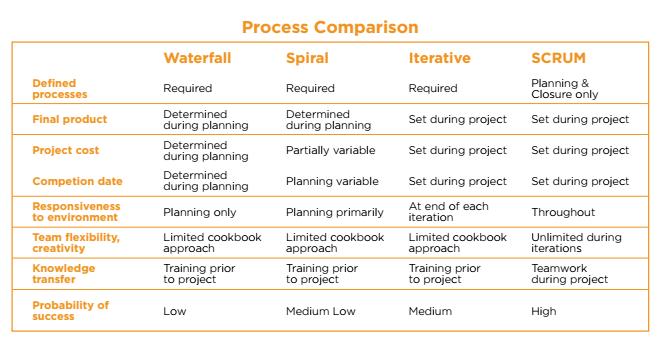Keys to Selecting Development Partners for Your Payments Project
 By Marcelo Tribuj, Truelogic Software
By Marcelo Tribuj, Truelogic Software
It’s hard to imagine a fintech or payments company that today doesn’t have at least one key business initiative hinging on some kind of software development. Whether it’s a new mobile app, API or a cloud play, the pressure to execute tech projects in today’s financial services environment is decidedly high, while the availability of qualified people is equally low. More often than not, business leaders must turn to outsourcing.
In fact, Deloitte projects a 12 percent growth, at a minimum, in global IT outsourcing, in 2017. This and the visa climate naturally will increase competition for personnel. However, as we advise our industry peers, with the right criteria, evaluating potential suppliers doesn’t have to be a major obstacle.
Choosing Wisely
When choosing a nearshore or offshore software provider for your payments project, there is a set of factors that technical decision makers (TDMs), need to keep in mind. In my experience, they are: culture and communication, development methodology, trends in programming languages and platforms, and different models for project management. To be sure, having a clear vision of the type of solution needed and the goals to be achieved are also critical in this endeavor.
Culture and Communication
Among the main considerations are communication and possible cultural barriers or affinities. Cultural transparency and understanding are essential to avoiding project delays and communication problems. Outsourcing to neighboring countries in the same or similar time zone tends to be most accessible and reduces the risk of language barriers and differences in the workday. Collaboration and cultural affinity also help to build more lasting relationships, optimal response times and closer project oversight.
Offshore outsourcing to more remote areas with significant time differences (more than three hours), can certainly offer lower costs and even more efficient delivery than local (onshore) or regional (nearshore) services. But the main disadvantage in my experience is frequent revisions and time lost due to miscommunication with the project manager or within the project team.
Development Methodologies
The development process is naturally affected by a project’s relative complexity and, especially, the methodology utilized. The latter depends as much on the company as on the development partner. Companies often prefer specific methodologies based on previous experience or in-house policy. In cases where the client has little or no knowledge of a methodology, a good provider can play a guiding role in adapting the right methodology for the type of project under development.
Every model has its pros and cons for both parties in the process, and TDMs should take this technical aspect into account from the beginning to ensure transparency. Whether traditional or cascade (linear processes defined by milestones), agile, RAD or Extreme—a good supplier will master the required methodology and adjust to the needs of the project.
 The development process is affected by a project’s complexity and, especially, the methodology it uses. Every model has pros and cons that should be taken into account from the beginning to ensure transparency. A good provider can play a guiding role in adapting the right methodology for the type of project under development. Source: UML.org The development process is affected by a project’s complexity and, especially, the methodology it uses. Every model has pros and cons that should be taken into account from the beginning to ensure transparency. A good provider can play a guiding role in adapting the right methodology for the type of project under development. Source: UML.org |
According to the TIOBE Index, the most popular programming language in 2017 is Java. One of the most commonly used languages in the software development community, Java runs on about 7 billion devices. Its versatility makes it appropriate for everything from PCs to smart TVs. Java’s closest rivals are C# (the evolution of C and C++) and Python, both known for their dynamism.
However, it’s also important to remember that the most popular or sophisticated language is not always the right choice for the job. More important is its suitability for the project and its ability to ensure efficiency, interactivity and stability.
Project Managers and Models
Project management depends a lot on the methodology chosen for the project, but it relies more on contact between the client and the software developer. This communication goes beyond the project manager to include the entire team on both sides.
More than just a coordinator, the project manager should be a leader capable of adapting to changes in the environment and the client’s model. Agile methodologies can help with this to a certain extent. Adopting best practices and sharing them across teams creates a library of knowledge that will remain useful beyond the individual project’s completion and can benefit both parties in future initiatives.
Every project and solution is different and brings with it unique challenges and particularities. This is what makes it so important for companies to be able to count on a software developer with the experience and knowledge to deliver a quality product.
Marcelo Tribuj is the CEO of Truelogic Software, a software development company specializing in the fintech industry and focused on web-based software, mobile and web apps. Its clients include Visa, McAfee, NYT and Sony.
Citations
UMSL – http://www.umsl.edu/~sauterv/analysis/f06Papers/Rahardjo/
Business2Community – http://www.business2community.com/tech-gadgets/take-closer-look-near-shore-01795629#rmzVUezpmEduUGFL.97
Enterprise Irregulars – https://www.enterpriseirregulars.com/113417/h-1b-visa-pivot-major-opportunity-indian-outsourcing/
The Balance – https://www.thebalance.com/how-outsourcing-jobs-affects-the-u-s-economy-3306279
Tiobe – http://www.tiobe.com/tiobe-index/
In Viewpoints, payments technology professionals share their perspectives on the industry. Paybefore presents many points of view to offer readers new insights and information. The opinions expressed in Viewpoints are not necessarily those of Paybefore.










































